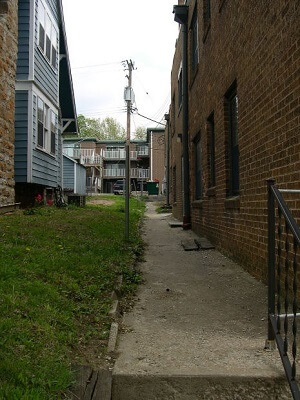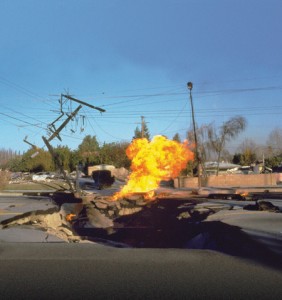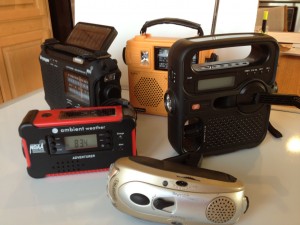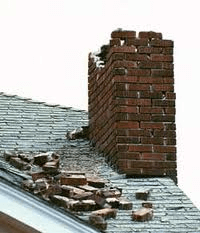The Meaning of Green: Wisdom From The Parking Lot
I mentioned in my last post that we had staffed a table at a local neighborhood Emergency Preparedness Faire. (See “Lessons Learned.”)
Well, over the weekend we did some more outreach – this time at our local Chinese grocery store.

Set up in the Parking Lot
This activity was planned by the City’s paid Community Emergency Response Team leaders, who set up tables in front of six different retail locations. We took on the 99 Ranch Market because it’s literally across the street from where we live.
(You’ve heard our mantra before: “The more prepared the people around us, the safer we’ll be in an emergency!”)
The Setting:
This event was completely different from last week’s event. Instead of many tents and tables and a full complement of police cars and fire trucks, we had a lone table in the middle of the busy grocery store parking lot. Instead of music and balloons and professional demonstrations, we had eight volunteers, three of whom knew each other. Instead of neighbors out for a comfortable Sunday stroll, we were faced with busy citizens getting their shopping done early in the weekend.
The Advance Guard:
We stationed our most capable people at the two doors of the grocery store, ready to hand out booklets about earthquake preparedness. They greeted shoppers on their way INTO the store, reminding them to visit the main table ON THEIR WAY OUT. (This, to give them time to think about it.)
Key words that caught people’s attention: “Free. City-sponsored. Sign up for the class.”
The Main Table:
At the main table, people approached guardedly. Generally, they pretended to speak no English. I heard our Chinese -speaking colleagues address people this way: “Hi! Ni hao!”
AFTER they realized we had nothing to sell, suddenly we could switch to English, no problem!

Dried rice emergency rations
We showed CERT training schedules, emergency equipment, and people began to sign up for the next classes. Some people were young, others clearly older. One woman told a long an impassioned story about her experience in the 1999 Taiwan earthquake – which had happened exactly 14 years ago to the day. That earthquake killed 2,400 people.
On Saturday, in about 3 hours, we handed out over 300 earthquake pamphlets and signed up 20 people to take the next CERT training class. We ate Chinese “donuts” (fried batter, no sugar). We laughed at the story about a green hat signifying that a man’s wife is having an affair. (The CERT color is, of course, green!) We all shook our heads at the guy who walked quickly by, and when we called out, “Are you prepared for an earthquake?” he answered, “I don’t live here.”
It was another great outreach event. I was proud to be a part of the team!
(Oh, and we learned that the CERT color isn’t really green. It’s “emerald.”)
Did you take part in any special activities during National Preparedness Month? Leave a comment!
Virginia Nicols
Your Emergency Plan Guide Team
Sign up below and get ALL our stories!


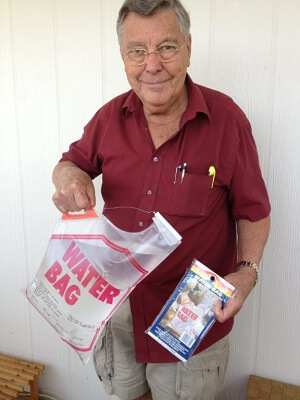



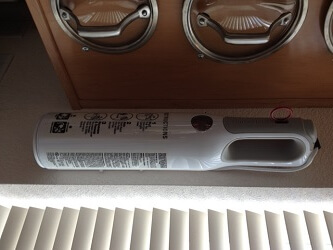

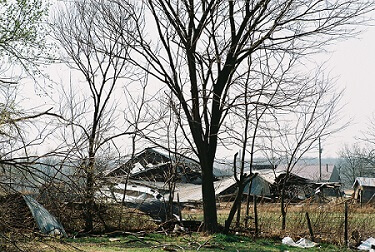

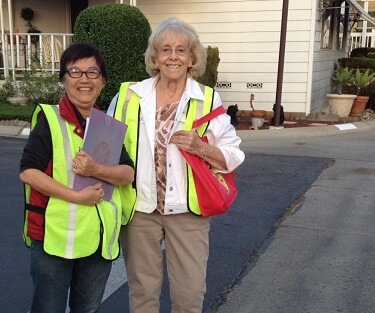
 We have written page after page of recommendations and suggestions about how to prepare for a disaster. Some of our tips include simple changes in behavior – like keeping a flashlight and shoes next to the bed, or making sure you have extra canned food stored in the back of the cupboard.
We have written page after page of recommendations and suggestions about how to prepare for a disaster. Some of our tips include simple changes in behavior – like keeping a flashlight and shoes next to the bed, or making sure you have extra canned food stored in the back of the cupboard.
